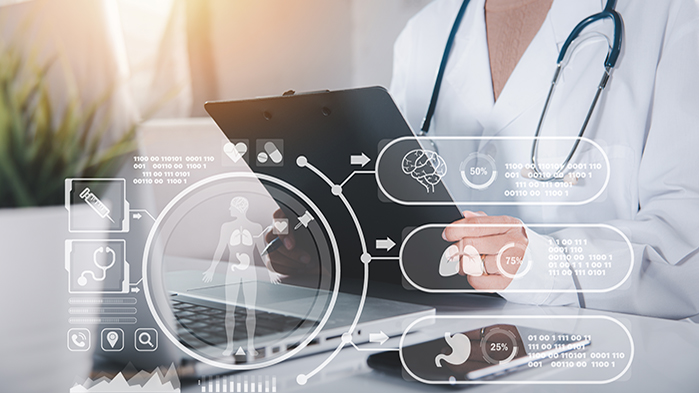Remote patient monitoring (RPM) is gathering impetus as a technological advancement in healthcare, with mounting evidence of its value in improving patient outcomes. RPM allows healthcare professionals to monitor patients outside of conventional clinical settings, enabling timely interventions and enhancing the quality of care. According to Insider Intelligence, an estimated 70.6 million US patients, or 26.2% of the population, will use RPM tools by 2025. Providers using RPM-enabled home health monitoring systems are also significantly reducing hospital readmissions. Here’s how RPM technology is improving both treatment outcomes and patient satisfaction.
Redefining Healthcare through Technology
RPM is redefining healthcare by enabling continuous, real-time patient monitoring, especially for those with chronic conditions. With its ability to integrate with advanced technologies like AI, RPM provides data-driven insights for personalized care plans, ensuring better medication adherence and treatment efficacy. As healthcare globally shifts towards digital solutions, RPM stands out as a scalable, future-ready approach, setting new benchmarks and establishing itself as the new standard in patient-centric care.
The true potential of RPM is realized when patients receive immediate episodic care and a continuous, holistic healthcare experience. For healthcare practitioners, RPM means access to more accurate data, enabling timely interventions and a comprehensive understanding of a patient’s health trajectory. For patients, it enables them to feel more connected, understood, and cared for. This enhanced patient experience elevates care quality and offers cost-effective solutions by minimizing frequent hospital visits and readmissions.
Supporting Diverse Health Needs
RPM’s versatility is evident in its ability to cater to various patient demographics, each with unique healthcare needs. From hypertensive patients, who benefit from instant blood pressure fluctuation detection, to elderly patients who can avoid frequent hospital visits, RPM offers tailored solutions. Other groups that stand to gain immensely include post-operative patients, high-risk pregnancies, rural populations, mental health patients, and more.
Read: Patient Wellbeing Closely Linked to 30-Day Readmission Rates
For home healthcare agencies, RPM technology offers the ability to monitor patients in real time, ensuring that any anomalies or concerns are addressed promptly. This proactive approach enhances patient safety and boosts the efficiency of care delivery. In addition, RPM provides a wealth of data that can be analyzed to refine care strategies, ensuring that patients receive the best possible care tailored to their individual needs.
Encouraging Patient Compliance
Patient adherence is critical for effective healthcare. RPM streamlines this process, ensuring patients remain compliant with both the technology and their prescribed care regimens, in the following ways:
Insights and Interventions
When patients follow an RPM program, it allows accurate data collection and timely interventions. In order to see the true benefit of an RPM program, patients need to use their devices correctly and consistently, ensuring continuity of care and consistent data for healthcare providers. Moreover, this adherence maximizes the program’s benefits, leading to better patient outcomes.
Medication Adherence
Beyond the RPM program, there’s the broader aspect of medication adherence. For example, studies show hypertension patients who adhere to their medication regimens are 30% to 45% more likely to achieve blood pressure control than those who don’t. This statistic highlights the importance of taking medication as prescribed.
Consider a scenario where a patient’s blood pressure spikes unexpectedly. With RPM, such anomalies are detected in real time. Upon reaching out, the nurse monitoring the account might discover the patient missed a dose of medication due to a simple oversight. Such real-time feedback loops ensure lapses in medication intake are identified and addressed promptly, preventing potential complications.
Read: 8 reasons patients don’t take their medications
Greater Vigilance and Patient Satisfaction
RPM improves provider vigilance, ensuring patients remain compliant with the technology and their prescribed care regimen. For healthcare practitioners, this means fewer complications, better patient outcomes, and a more efficient care delivery system. Moreover, patients are satisfied with the improved results. A survey by the University of Pittsburgh Medical Center reported a patient satisfaction rate of over 90% after equipping patients with remote patient monitoring equipment and tablets.
The Role of AI and Machine Learning in RPM
As we navigate patient care, AI and machine learning play an increasingly pivotal role. A growing cohort of physicians exist who, while experts in their medical field, also have a keen interest in the technological underpinnings of tools they use.
Understanding how RPM harnesses AI and machine learning is crucial for tech-savvy professionals. These integral components amplify the technology’s capabilities, sifting through vast amounts of patient data, identifying patterns, predicting potential health issues, and suggesting interventions.
This means healthcare practitioners don’t just react to health events, but proactively manage them.
Financial Benefits of Patient Retention through RPM
Patient retention is a significant indicator of a healthcare practice’s success and financial stability. A loyal patient base ensures a consistent revenue stream, reducing the unpredictability of fluctuating incomes.
According to Bain & Company, even a modest increase in customer retention can lead to a substantial increase in profit. While this insight originates from the business world, its essence applies to medical practices.
Moreover, the cost of acquiring a new patient often surpasses that of retaining an existing one. With RPM, healthcare providers can foster patient loyalty, ensuring a steady flow of income and organic growth through positive referrals.
Fewer Complications, Greater Efficiencies
The ultimate measure of any healthcare tool is its impact on patient outcomes. With its continuous monitoring and real-time feedback, RPM has proven its worth. Recent studies emphasize RPM’s positive impact, highlighting reduced hospital readmissions, better chronic condition management, and improved patient health. This means fewer complications and a more efficient care delivery system for healthcare practitioners.
The role of technology in RPM is not just supplementary but fundamental. Remote patient monitoring bridges the gap between traditional healthcare practices and the demands of the digital age. For healthcare practitioners looking to elevate their practice, RPM is an essential component in their toolbox.
For more information on how RPM technology can help you improve outcomes and increase patient satisfaction, please contact us and arrange a demonstration.

Leave A Comment